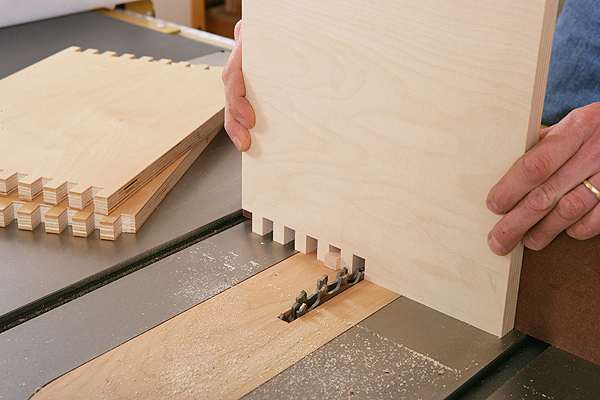
I make box joints on the table saw. I have invested in a box joint blade set, but my jig is shop-made. Every TV show or video I’ve ever seen makes box joints with successive cuts on one piece at a time, but I’ve been successful in almost halving that time. Here’s how: cut the first piece the traditional way, with the wood up against the registration pin. Then, before cutting all the slots on that piece, flip it to the other side of the pin and register the mating piece against it in the usual way to make the first cut on that piece. Now, flip the first piece back, register the first cut on each piece over the pin and make the successive cuts on both pieces at the same time. Seems to work great and much quicker. Is there a downside? – Henry Burks
Tim Inman: Downside? Not that I know of, except this: box jointing is notoriously tedious and touchy. If your multi-cut system creeps out of spec just a little, the joints won’t fit right. If you are stack cutting them, then you have a lot of joints that don’t fit right. Also, some “box” joints are used to actually make crude boxes like beehive frames, etc. Other box joints are used to make really nice boxes. The fit and finish need to match the use.
Chris Marshall: That’s a clever way to speed up the process, Henry! Aside from Tim’s comment, the only other concern I would have is that on really large workpieces (like those shown in the photo above), it might be a bit harder to control a stack of two against the box joint jig’s fence. But, the pin on the jig should minimize that problem as soon as the two parts are engaged over it, and clamping the parts together to act as one would also help. Otherwise, I don’t see a downside, either. I’m going to try it the next time I’m making box joints for a project. Thanks for sharing the idea.





